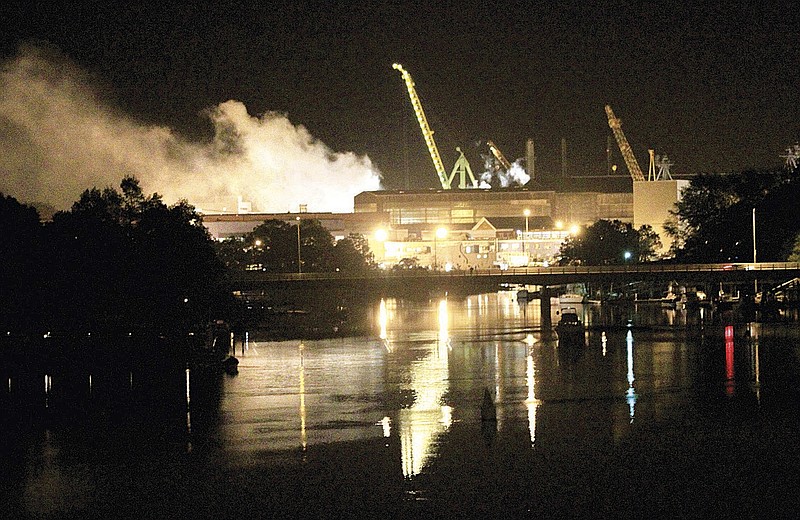KITTERY, Maine (AP) - A fire that swept through a nuclear-powered submarine in dry dock at Portsmouth Naval Shipyard caused extensive damage to its forward compartments, raising questions Thursday about whether it might have to be scrapped.
Rear Adm. Richard Breckenridge praised the USS Miami's crew, shipyard firefighters and additional firefighters from Maine and New Hampshire, saying there were "a lot of heroes that worked together to save the ship."
The submarine's nuclear propulsion was spared, but the fire damaged living quarters, the command and control center and the torpedo room.
The U.S. Navy was unable to complete a formal assessment Thursday, but the damage was severe enough to trigger a discussion over whether costly repairs should be undertaken on the 22-year-old Los Angeles class attack submarine.
A defense analyst at the Lexington Institute, an Arlington, Va., public policy think tank, said the duration of the fire "suggests extensive damage that could render the vessel useless."
"These submarines were designed decades ago. So they're no longer state of the art," analyst Loren Thompson said. "If this vessel returns to service, I will be amazed."
Working in the submarine's favor is the fact workers had removed some equipment and gutted part of the vessel during a retrofit, said U.S. Rep. Chellie Pingree after meeting with the shipyard commander.
Breckenridge said it was premature to say whether the submarine could be salvaged.
Ships in the USS Miami's class cost about $900 million at the time to build. The newest attack submarines, the Virginia class, cost about $2.6 billion apiece.
The fire broke out Wednesday evening while the Miami was on a 20-month stay at the shipyard for an overhaul, and it took firefighters from more than a dozen agencies until Thursday morning to put out the fire, described as intense and smoky.
Pingree described it as a "hot scary mess."
"It takes a lot of guts to go into a burning building. But the idea of going into a submarine full of hot toxic smoke - that's real courage," she said.
Two crew members, three shipyard firefighters and two civilian firefighters were hurt, but their injuries were minor, officials said.
Officials were waiting Thursday to begin venting smoke and noxious fumes so workers could go inside the submarine to assess the damage.
Workers had to let fire-damaged compartments cool enough for fresh air to be safely introduced without risk of another fire.
There were no details on the cause of the fire Thursday, and there will be a thorough investigation into what went wrong, said Breckenridge, commander of Submarine Group Two in Groton, Conn., where the Miami is based.
Reporters were not allowed onto the base to see the submarine Thursday. But Pingree and others who viewed it said there were no outward signs of damage because the fire was contained inside the 360-foot-long hull.
Firefighters isolated the flames so they would not spread to nuclear propulsion spaces at the rear of the submarine. There was nuclear fuel on board the sub, but the reactor has been shut down for two months and was unaffected.
The rear compartments including the nuclear propulsion unit remained habitable, and crew members never left that part of the sub during the fire, Breckenridge said.
Nonetheless, the blaze was stubborn.
"The fire spread to spaces within the submarine that were difficult to access, presenting a challenging situation for initial responders," the admiral said. "But they persevered in incredible heat and smoke conditions, demonstrating exceptional courage."

